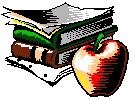 Rethinking
The Academy:
Rethinking
The Academy: Rethinking
The Academy:
Rethinking
The Academy:While teaching in the virtual university may well afford teachers and students opportunities to overturn the traditional relationships between those "leading" the course and those "taking" it as students act as experts in their own classroom communities, virtual classes can also act to replicate the same power relationships that are already all too present in the traditional classroom.
That is, new technologies, if not well thought out, can firmly center the classroom around the figure of the teacher. This is especially true if the teacher acts as the center for all technical information, and does not share that responsibility with the students.
On the other hand, technologies such as listservs can also open up the class - for instance, in a recent research paper course I taught, the first writing assignment was titled "Who am I?": students were asked to write and post a short essay on the class list (which was closed to outsiders).
Before completing the assignments, I trained students in how to send e-mail to our class listserv. Though no one could post to it until I added them, once I added members of the class and outsiders approved by the class (for instance, a research librarian interested in the class), they were able to e-mail each other without requiring assistance from the teacher and knew that only those added to the list were able to see what they were writing. As a result, they used the list to do more than just post their papers: they got in arguments, resolved issues, and shared information about each other.
Students used this technology to get to know one another - at least virtually. Though the class met in a lab, and though students referred to one another by name on the list, many students did not make the connection between names and faces till the end of the semester if at all, though they knew each other and their writing quite well electronically.
Last Modified: August 2, 1996
Copyright © 1996 by Keith Dorwick